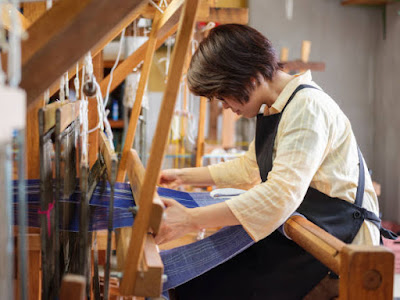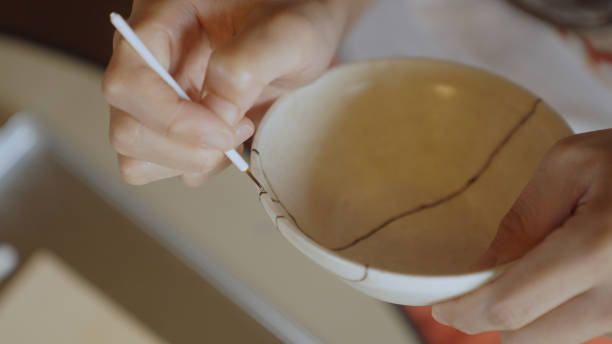Meta Description: Explore Japan's latest advancements in Japanese Textiles and knitting technologies, from mechanized Nishijin-ori brocade to photographic weaving and ultra-thin Super-Organza fabric, to revolutionary knitting machines. Discover how these innovations are reshaping the world of fashion and design.
In Japan, textiles have always been
cherished for their exquisite textures and vibrant colors, adorning both living
spaces and clothing. While a myriad of textiles have been crafted across the
nation, Kyoto's Nishijin-ori, or Nishijin brocade, stands out as the
quintessential artistic fabric, known for its opulent patterns resembling
intricate reliefs. Traditionally, weaving Nishijin-ori by hand demanded
masterful skills and extensive time, resulting in kimono, obi (kimono sash),
and drapes of considerable expense. However, recent advancements in
mechanization and computerization have democratized its production, making
these exquisite products accessible at more affordable prices.
But innovation isn't limited to Nishijin-ori alone; Japan is also making significant strides in weaving and knitting technologies across the textile landscape.
1. Photographic Weaving: Precision in Replicating Images
In Yonezawa, Yamagata Prefecture, a textile manufacturer with deep roots in traditional Yonezawa-ori fabric production embarked on a groundbreaking journey. They developed a computer program, PHOTOTEX, which ingeniously converts digital photographic data into program data to control weaving machines. This innovative approach employs superfine threads of various colors, intricately woven to replicate images with astonishing fidelity. With up to eight different colored threads, it effortlessly recreates not only traditional designs but also transforms personal photographs and cultural assets into unique textile pieces.
2. Super-Organza: The Lightest and Thinnest Fashion Textile
Nanao, Ishikawa Prefecture, introduced
the world to Super-Organza, an extraordinary fabric born from a quest for
unprecedented lightness and thinness. Originally commissioned to develop an
ultra-thin electromagnetic shield for plasma televisions, the manufacturer utilized
seven-denier ultra-fine polyester yarns, significantly finer than the standard
20-denier threads. These ultra-fine threads, one-fifth the thickness of human
hair and nearly invisible to the naked eye, opened up a world of possibilities
for ultra-thin clothing textiles. After two and a half years of meticulous
research, a special weaving machine emerged, capable of producing fabric
weighing a mere 10 grams per square meter, and subsequently, an astonishing 5
grams. Super-Organza has found its way into the world of haute couture in Paris
and the costumes of ballerinas at the Opéra national de Paris, captivating
audiences worldwide.
3. Innovations in the Knitting Field
In the realm of knitting, Japanese Textiles technology has heralded remarkable transformations. Traditionally, knitwear
involved cutting knit cloth into sections and then stitching them together,
creating unnecessary waste and discomfort. A groundbreaking knitting machine
from Wakayama Prefecture has redefined this process. It produces three-dimensional
fabric in one seamless stroke, eliminating the need for seams and enhancing
comfort and elasticity. This innovative technology allows for versatile design
options and efficient yarn usage, enabling small-batch production, ultimately
opening doors for on-demand and custom-made clothing.
These examples illuminate how Japanese Textiles
advanced technical expertise is reshaping weaving and knitting techniques,
previously considered unattainable. Products emerging from these groundbreaking
technologies continue to captivate the global fashion and design community.



.jpg)



